Crossing America’s most dangerous bridges isn’t for the faint of heart. These steel and concrete giants challenge even the bravest drivers with heart-stopping heights, extreme weather, and structural concerns that would make any engineer nervous.
Some spans sway in high winds while others crumble under decades of heavy use. A few have earned scary nicknames from locals who cross them daily, hoping their luck holds out. One bridge even peels the tops off trucks like a giant can opener, while another forces drivers to brave a 955-foot drop with only wooden planks between them and the canyon below.
Join us as we explore these notorious crossings that have earned their spots on America’s list of most dangerous bridges. Each one tells a unique story of risk, resilience, and the daily courage of drivers who have no choice but to face these challenging spans.
#1. Alaska’s Kuskulana Bridge Has Become A “Thrill Ride”

Deep in the Alaskan wilderness stands the heart-pounding Kuskulana Bridge, stretching across a breathtaking canyon 238 feet below. Built in 1923, this single-lane wooden bridge spans 525 feet and offers an unforgettable experience for those brave enough to cross it.
Locals often warn visitors about the bridge’s unnerving sway, especially when strong winds whip through the canyon. Weather conditions frequently turn treacherous, with ice and snow making the wooden planks particularly challenging to navigate. Many travelers report white-knuckle crossings as their vehicles carefully inch across the aging structure. The bridge’s remote location adds another layer of risk, as emergency services could take hours to reach stranded motorists.
Despite regular maintenance, the wooden deck boards occasionally come loose, creating unsettling sounds that echo through the canyon. Adventure seekers specifically seek out this bridge for its reputation as a nail-biting crossing, though transportation officials continuously monitor its structural integrity.
#2. Pulaski Skyway Is New Jersey’s “Death Highway”
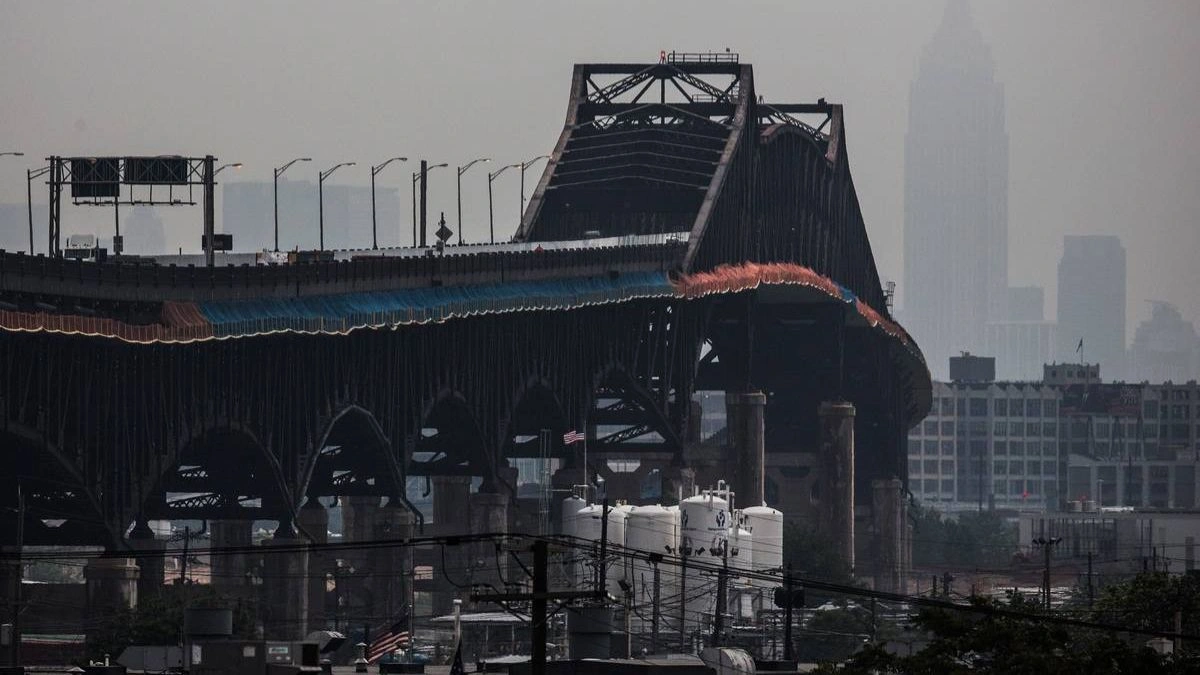
Standing tall above New Jersey’s industrial landscape, the Pulaski Skyway carries thousands of commuters daily across its aging steel framework. Since its opening in 1932, this 3.5-mile-long elevated highway has earned its ominous nickname through countless accidents and near-misses.
Narrow lanes force drivers to navigate with extreme caution, while the absence of shoulders leaves no room for error or emergency stops. Rush hour brings particularly dangerous conditions as cars weave between lanes at high speeds.
The bridge’s outdated design features sharp curves and sudden merges that catch unwary drivers off guard. Salt air from nearby waterways continues to corrode the structure’s steel bones, despite ongoing rehabilitation efforts. Local residents share stories of intense crossings during severe weather, when strong gusts buffet vehicles across the exposed roadway. Regular maintenance work creates additional hazards as lanes close and traffic patterns shift unexpectedly.
#3. Deception Pass Bridge In Washington Is Too Narrow For Comfort

Spanning the churning waters between Whidbey and Fidalgo Islands, Washington’s Deception Pass Bridge challenges drivers with its slim 20-foot-wide roadway. Towering 180 feet above the swirling currents below, this historic bridge forces opposing traffic to squeeze past each other with mere inches to spare.
Heavy fog often rolls in without warning, reducing visibility to just a few feet ahead. Tourists frequently stop mid-span to photograph the spectacular views, creating dangerous bottlenecks for other vehicles. Strong crosswinds howl through the pass year-round, making steering a constant challenge for drivers. Large trucks and RVs must carefully time their crossings to avoid meeting oncoming traffic on the narrow spans.
The bridge’s picturesque setting attracts thousands of visitors annually, leading to increased congestion and risk. Walking across the pedestrian walkway can be equally unnerving, as the thin barrier offers little psychological comfort from the dramatic drop below.
#4. The Rainbow Bridge In Texas Looks Like A Roller Coaster

Rising dramatically above the Texas landscape, the Rainbow Bridge creates an optical illusion that makes drivers feel like they’re ascending into the sky. This steep arch bridge reaches a maximum height of 177 feet, causing many motorists to grip their steering wheels tighter as they approach the summit.
Approaching vehicles seem to disappear over the crest, leading to anxious moments for first-time crossers. Summer heat waves create shimmer effects that distort depth perception, adding another challenge for drivers. The bridge’s unique design dates back to 1938, when engineers hadn’t fully considered the psychological impact of such a steep grade.
Maritime traffic passing underneath often draws drivers’ attention away from the road ahead. During peak hours, the sudden speed changes of nervous drivers create risky situations for everyone on the bridge. Local commuters have learned to stay in lower gears to maintain better control during the dramatic descent.
#5. Colorado’s Royal Gorge Bridge Is 955 Feet High

Soaring nearly a thousand feet above the Arkansas River, Colorado’s Royal Gorge Bridge tests the nerves of even experienced drivers. Wooden planks make up the roadway, creating distinctive sounds that remind crossing vehicles of their extreme elevation. The bridge stretches 1,260 feet across the canyon, treating drivers to stunning views that can prove dangerously distracting.
Morning fog sometimes shrouds the canyon floor, creating an eerie sensation of floating above the clouds. Sustained winds at this elevation can reach concerning speeds, causing the bridge to gently sway. Tourists often stop their cars to take photos, leading to unexpected traffic patterns and potential collisions.
The wooden deck requires frequent maintenance, occasionally forcing cars to drive over temporary steel plates. Mountain weather can change rapidly, surprising drivers with sudden rain or snow squalls. Even though the bridge undergoes regular safety inspections, its extreme height never fails to inspire awe and anxiety in those who venture across.
#6. The Emlenton Bridge In Pennsylvania Is One Of The Worst
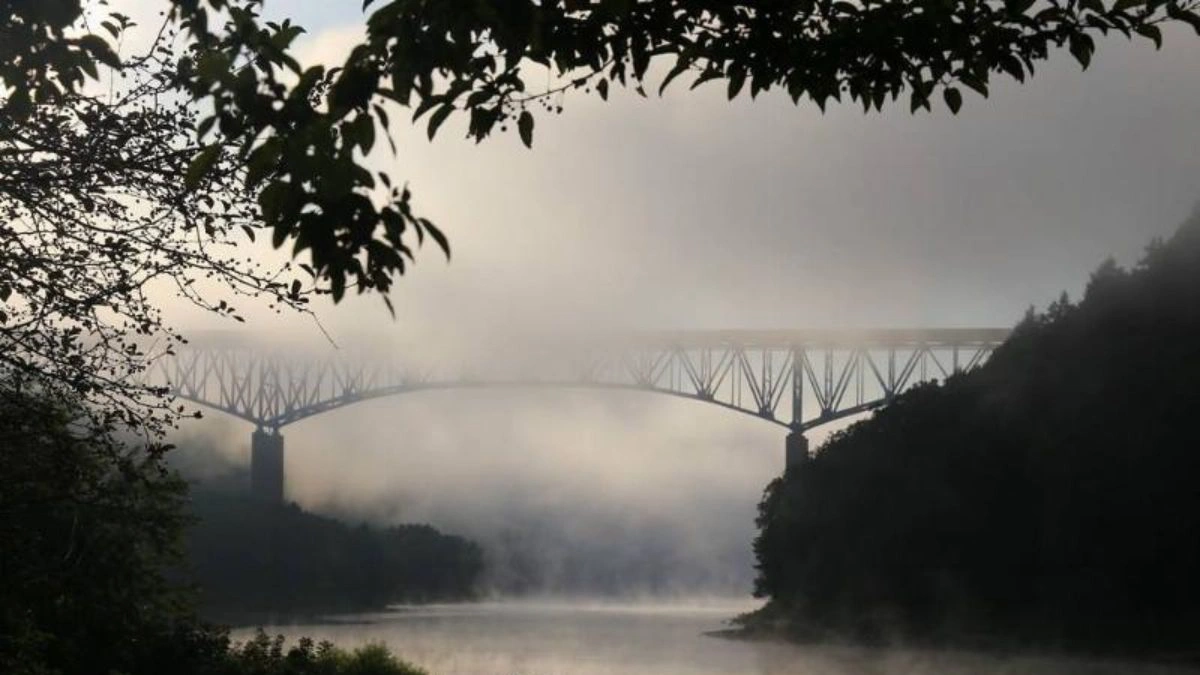
Standing high above the Allegheny River, this towering structure strikes fear into the hearts of daily commuters. Thick fog often blankets the 270-foot-high crossing, creating ghostly conditions that challenge even experienced drivers. Rush hour brings particularly nerve-wracking moments as vehicles navigate the narrow four lanes. Winter storms frequently coat the road surface with treacherous ice, while strong winds howl through the steel framework.
Local residents share countless stories of white-knuckle crossings during harsh weather conditions. Traffic accidents occur with concerning frequency, especially during peak travel times. Many drivers report feeling dizzy when glancing at the river far below. Emergency response teams face significant challenges when accidents occur on this elevated span.
Despite ongoing maintenance efforts, the bridge’s aging infrastructure continues to worry transportation officials. Regular inspections reveal the toll that decades of heavy use have taken on this crucial river crossing. Weather-worn guardrails and rough road surfaces add to drivers’ anxiety.
#7. The Clark Fork River Bridge In Montana Is Unstable

Stretching across Montana’s picturesque Clark Fork River, this aging structure has raised serious concerns among engineering experts. Limited repairs over its lengthy service life have led to visible deterioration of crucial support components. The bridge’s relatively modest 100-foot span belies its significant safety challenges.
Heavy logging trucks regularly test the structure’s load limits, causing noticeable vibrations throughout the deck. Local residents often avoid crossing during spring floods when rushing water threatens the foundation. Recent rehabilitation work has addressed some critical issues, yet worries persist about long-term stability. Countless patches and temporary fixes dot the bridge’s weathered surface. Traffic must slowly creep across to minimize stress on the fragile structure.
Engineering assessments consistently highlight the need for major upgrades or complete replacement. Emergency weight restrictions occasionally force larger vehicles to seek alternative routes. The surrounding community depends heavily on this vital crossing despite its documented problems.
#8. The Chesapeake Bay Bridge In Virginia Frightens Firefighters
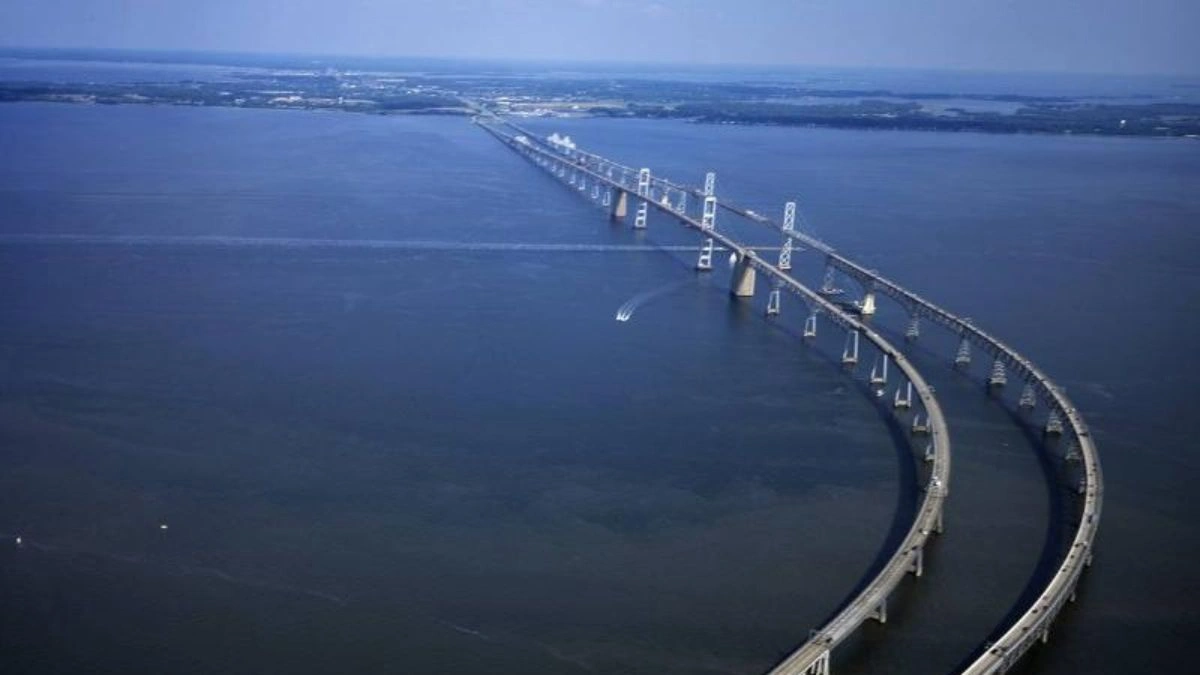
Stretching over four miles across open water, this mammoth structure creates anxiety even among seasoned emergency responders. Fierce winds whip across the exposed roadway, pushing vehicles toward the uncomfortably low guardrails. Morning fog banks frequently reduce visibility to mere feet, forcing drivers to proceed with extreme caution. The bridge’s impressive 200-foot height generates legitimate concerns about vertigo among crossing motorists.
Two-way traffic patterns create additional hazards as vehicles pass in close proximity. Summer tourists often slow dramatically to admire the spectacular bay views, causing dangerous speed differentials. Professional drivers report that the bridge’s length creates a unique psychological challenge. Emergency response times suffer due to frequent traffic backups and weather-related slowdowns.
The constant exposure to salt air accelerates corrosion of vital structural components. Regular maintenance crews face significant risks while working on the towering span. Maritime traffic passing below can distract already nervous drivers.
#9. Hawaii’s Kahekili Highway Bridge Is Notoriously Dangerous
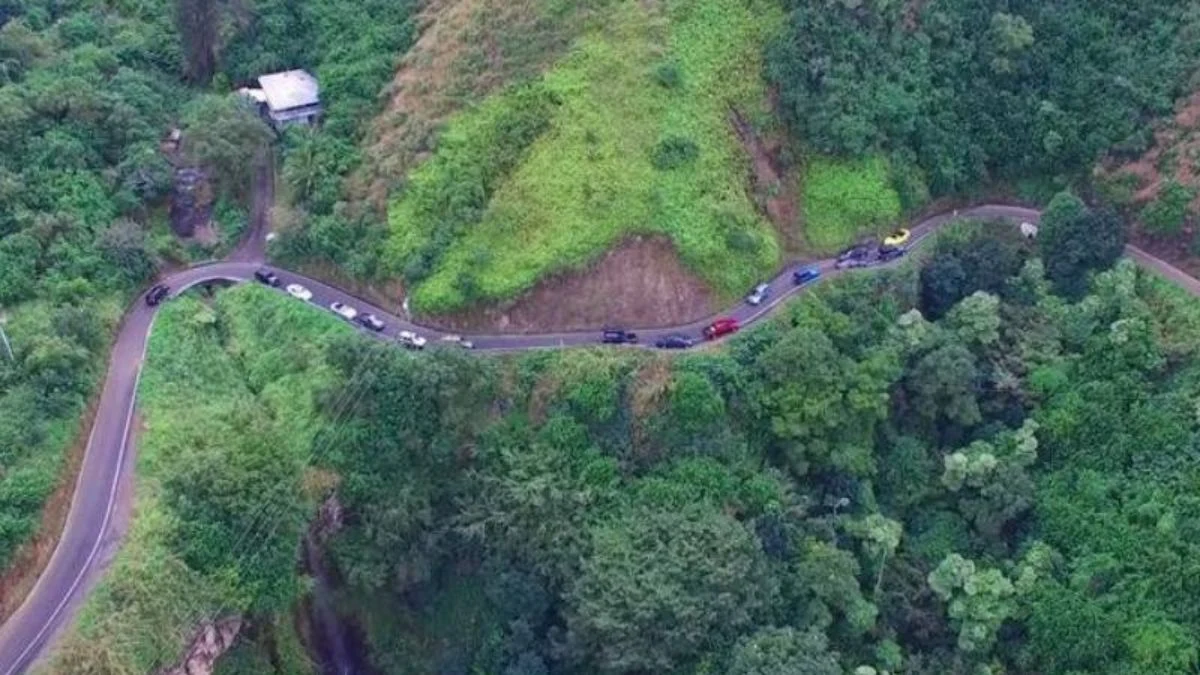
Tucked away in Maui’s lush landscape, this infamous bridge presents multiple challenges to those brave enough to attempt crossing. Rental car companies explicitly warn tourists about the risks of traversing this notorious span. The bridge’s extremely narrow width barely accommodates modern vehicles, leading to tense moments when cars meet.
Tropical downpours frequently create hazardous conditions on the already challenging roadway. Steep cliffs surrounding the bridge regularly shed rocks onto the approaching roadway. The remote location means help could be hours away if problems arise. Dense vegetation limits visibility on the bridge approaches, surprising unprepared drivers. Local residents carefully time their crossings to avoid meeting oncoming traffic.
The bridge’s position within a larger dangerous highway system compounds its inherent risks. Darkness falls quickly in this tropical setting, making nighttime crossings particularly challenging. The structure’s age and exposure to harsh environmental conditions raise ongoing safety concerns.
#10. Many Have Crashed On Fuller Warren Bridge In Florida

Spanning Jacksonville’s busy waterway, this massive concrete structure carries an overwhelming volume of daily traffic. The bridge’s eight lanes buzz with constant activity as over 170,000 vehicles compete for space each day. Recent widening projects have struggled to keep pace with ever-increasing traffic demands. Frequent accidents cause massive backups that ripple throughout the regional transportation network.
Heavy Florida rains create treacherous conditions on the long concrete span. Multiple serious crashes have left both drivers and officials searching for solutions. The bridge’s design encourages higher speeds than many drivers can safely manage. Maritime traffic passing below often creates distracting spectacles for already busy drivers. Rush hour brings particularly challenging conditions as commuters jockey for position.
The structure’s impressive 7,500-foot length requires sustained concentration from crossing motorists. Local commuters often seek alternative routes to avoid the bridge’s notorious traffic patterns.
#11. The “Can Opener” Wrecks Trucks In North Carolina
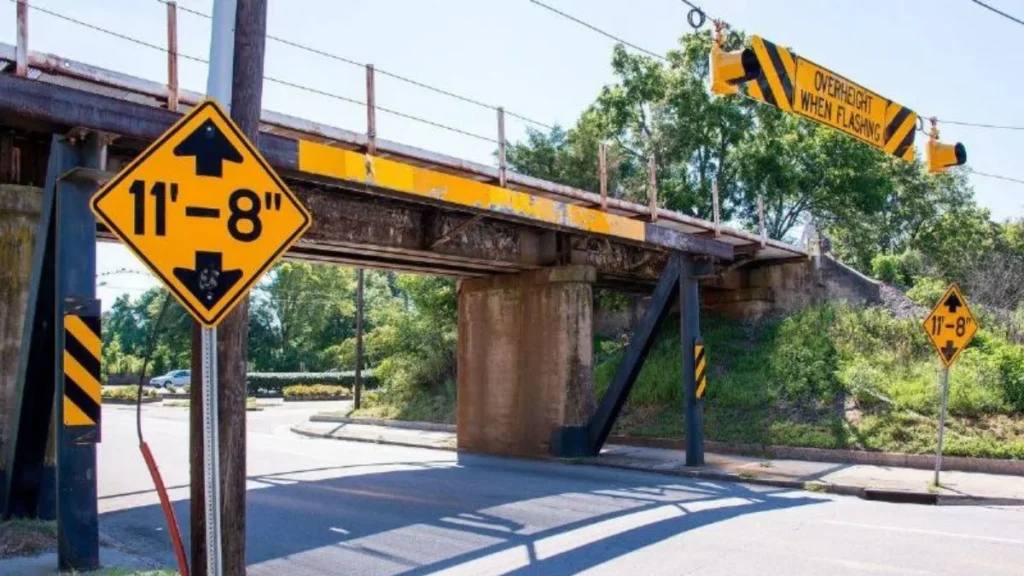
Lurking in Durham’s urban landscape, this infamous railway overpass has earned its unusual nickname through years of catching unsuspecting truckers off guard. Countless vehicles have met their match against the unyielding 11-foot-8-inch clearance, which sits well below modern standards. Flashing warning lights and multiple signs seemingly do little to prevent regular collisions.
Truck drivers often misjudge their vehicle’s height, leading to dramatic encounters with the bridge’s steel beam. Local residents have witnessed so many crashes that they’ve turned bridge incidents into a spectator sport. Video cameras constantly record the ongoing parade of roof-peeling accidents. Transportation officials have tried numerous solutions to prevent crashes, yet trucks continue to challenge the bridge’s low clearance.
Each collision reinforces the structure’s reputation as an undefeated champion against oversized vehicles. The surrounding area regularly echoes with the sound of crunching metal and blaring horns. Experienced truckers share horror stories about close calls with this notorious bridge.
#12. The Vicksburg Bridge Might Suffer From Floods
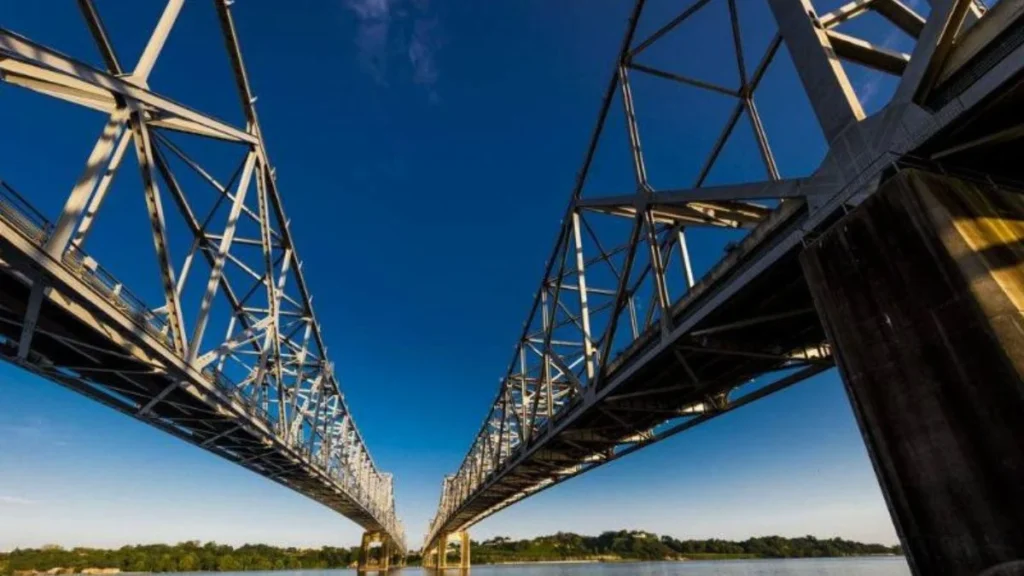
Stretching boldly across the mighty Mississippi River, this historic crossing faces constant battles against nature’s powerful forces. Spring floods regularly threaten the bridge’s stability, pushing massive debris against its sturdy supports. Ice storms transform the crossing into a treacherous skating rink during winter months.
Barges navigating the busy waterway must carefully maneuver to avoid striking the bridge’s foundations. Years of exposure to extreme weather have left visible marks on the aging structure. Local authorities constantly monitor water levels during rainy seasons, ready to close the bridge at a moment’s notice.
Maintenance crews wage an ongoing war against rust and deterioration caused by the river’s relentless moisture. Heavy commercial traffic tests the bridge’s strength daily, while flood-driven debris causes unseen damage below the waterline.
Navigation lights guide vessels through the bridge’s narrow spans, but accidents still occur with worrying frequency. The community anxiously watches the river’s rise each spring, knowing their vital crossing hangs in the balance.
#13. Florida’s Pensacola Bay Bridge Got Beaten By A Hurricane

Mother Nature unleashed her fury on this vital coastal link when Hurricane Sally struck with devastating force. Massive waves and fierce winds battered the structure mercilessly, leaving behind unprecedented damage. Construction barges broke loose during the storm, becoming battering rams against the bridge’s vulnerable supports.
Engineers discovered shocking levels of destruction during post-storm inspections, revealing multiple damaged sections. Communities on both sides of the bay suddenly found themselves cut off from essential services. Emergency repairs stretched into months as workers tackled extensive structural problems.
The bridge’s closure forced residents to make lengthy detours, disrupting daily routines and emergency services. Subsequent storms threatened to further damage the weakened structure as repairs continued. Local businesses suffered significant losses while waiting for their vital transportation link to reopen. The experience highlighted the vulnerability of coastal infrastructure to increasingly powerful storms.
#14. Calcasieu River Bridge, The Most Perilous Bridge In Louisiana
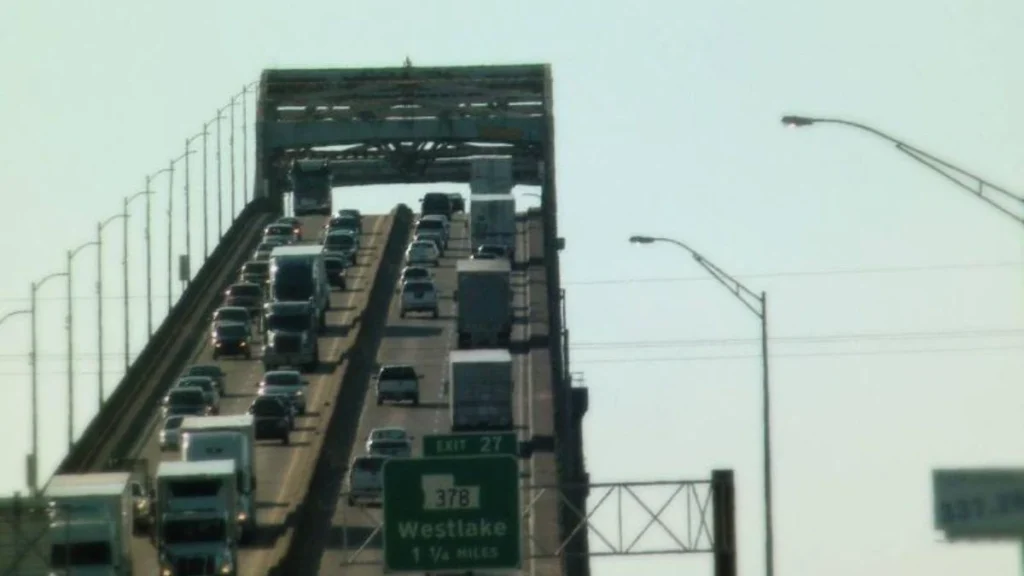
Approaching motorists face an optical illusion that masks this bridge’s true challenge: a steep climb followed by an even steeper descent. Drivers often realize too late that they’re heading up a significant incline, leading to sudden speed adjustments. The bridge’s unusual triangular profile catches many travelers off guard, especially during their first crossing.
Rain transforms the steep slopes into particularly challenging surfaces that demand extra caution. Heavy trucks struggle to maintain consistent speeds while navigating the dramatic grade changes. Countless accidents have occurred when drivers misjudged the bridge’s unique geometry. Local commuters have learned to anticipate the sudden transition from flat approach to steep incline.
The bridge’s aging surface adds another layer of complexity to an already challenging crossing. Emergency responders regularly deal with accidents caused by the unexpected design. Weather conditions frequently compound the difficulties posed by the bridge’s unusual shape.
#15. River River Bridge, A Rickety Border Between Oklahoma And Texas
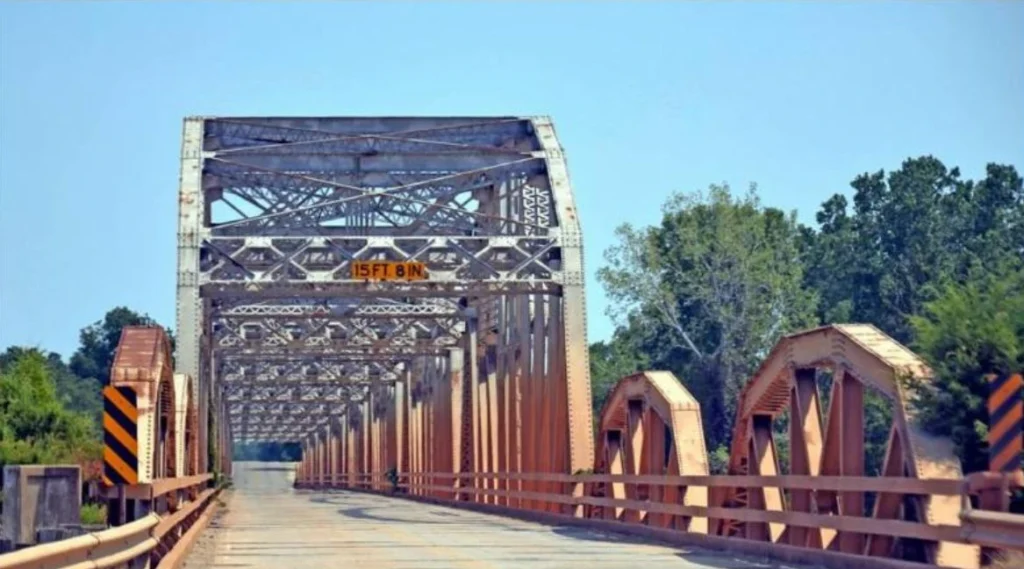
Connecting two states across turbulent waters, this aging wooden and concrete hybrid shows clear signs of its 1938 construction date. Weight restrictions limit crossing vehicles to just three tons, ruling out many modern trucks and RVs. Strong winds regularly buffet the narrow structure, causing noticeable movement that alarms crossing motorists. Wooden components creak and groan under the stress of passing vehicles, creating an unsettling soundtrack.
Storm seasons bring particular challenges as rising waters threaten the bridge’s foundations. Local residents question the structure’s ability to withstand another major flood event. Emergency vehicles must often find alternative routes due to the strict weight limitations. The bridge’s outdated design provides little protection from crosswinds and weather conditions.
Years of exposure to harsh elements have taken their toll on both concrete and wooden sections. Regular inspections reveal ongoing deterioration despite maintenance efforts. The surrounding community debates the future of their historic but problematic crossing.


